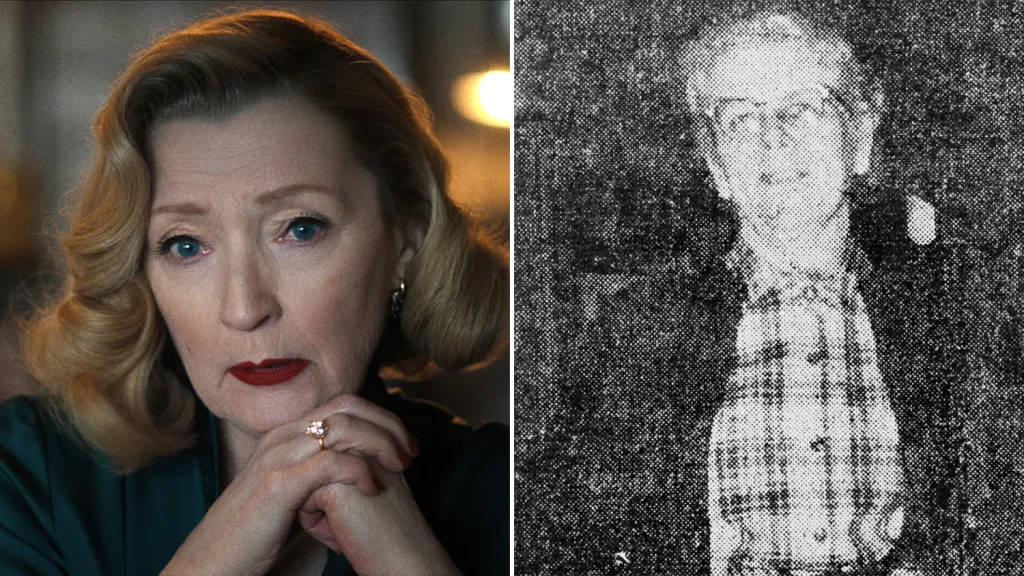Deputy Sheriff Frank Worden encountered an event that would permanently alter his life on a normally calm November morning in 1957. His mother, Bernice Worden, who owned an independent hardware business and was well-respected, was no longer there. An unlocked door, a few bloodstains on the floor, and a purchase receipt left behind were the only obvious clues that something was amiss. But in a matter of hours, those seemingly insignificant hints led to one of the most startling criminal revelations in American history. Unaware that he was going to unearth a horror that was much deeper than anyone had anticipated, Frank took the lead in the inquiry into his mother’s disappearance.

Ed Gein had gone into the store that day pretending to purchase antifreeze. By evening, Bernice had vanished, and Gein was soon identified by the evidence trail. Already suspicious of the recluse farmer, Frank Worden trusted his instincts and took immediate action. In addition to being horribly personal, what he discovered inside the Gein home was grotesquely unthinkable.
Bernice Worden – Key Details
| Attribute | Information |
|---|---|
| Full Name | Bernice Worden |
| Age at Time of Death | 58 years |
| Year of Death | 1957 |
| Occupation | Hardware store owner, Plainfield, Wisconsin |
| Family | Son: Frank Worden, Deputy Sheriff |
| Cause of Death | Gunshot wound, followed by mutilation |
| Killer | Ed Gein, apprehended November 1957 |
| Cultural Portrayal | Played by Lesley Manville in Monster: The Ed Gein Story (2024) |
Bernice was discovered hanging upside down in a chilly, run-down shed behind Gein’s farmhouse. Her body was skinned like a butchered deer, with her torso slit open. Her head was found in a burlap sack, beautifully preserved. Among other terrible objects in the house was her heart, which was mysteriously packed in a plastic bag. Even the most experienced investigators were taken aback by these facts, but for Frank Worden, the horror had a bitter closeness because it was his mother.
Frank was crushed under the emotional weight of the case. Amazingly, though, he kept the poise that his badge demanded. His quiet fortitude in navigating the evidence, interrogations, and press questions was later characterized by numerous colleagues as both courageous and unsettling. In actuality, Frank’s capacity to concentrate on justice in the face of intense sadness was very remarkable—and shockingly uncommon among those put in such circumstances.
Ed Gein’s house turned out to be a hideout during the ensuing weeks. Human skin-upholstered chairs, soup bowls made out of skulls, a belt made out of nipples, and a vest constructed out of the skin of a woman’s torso. These objects were signs of a more serious psychosis rather than a well-planned collection. Trauma, repression, and religious extremism were major factors in Gein’s fixation with his late mother, Augusta. It appears that Bernice had turned into a stand-in for his insane quest to bring back his ideal mother figure, which was created out of horror and flesh rather than memory or grief.
Few people remember Bernice Worden as more than a victim, but many remember Ed Gein for creating pop culture icons like Buffalo Bill in The Silence of the Lambs, Leatherface in The Texas Chainsaw Massacre, and Norman Bates in Psycho. Fewer yet comprehend the unique burden her son Frank bore: that of being the primary investigator in a crime that would eventually redefine criminal pathology, as well as the bereaved kid.
Frank Worden’s efforts to bring forth prompt justice were incredibly successful. His meticulousness, especially his prompt identification of Gein’s handwriting on the receipt, prevented what may have been a drawn-out probe. Many experts now concur that Frank was especially perceptive throughout the case because of his dual perspective as an officer and a son, which enabled him to respond quickly and ask the proper questions.
Frank’s story also serves as a reminder that sadness doesn’t always have boundaries. Professionals in the field of trauma response frequently discuss the perils of detachment, yet Frank needed to develop a certain emotional equilibrium that enabled him to function in the face of unspeakable suffering. Although less obvious to the general public, his post-arrest path was extremely important. He became more contemplative and noticeably quiet, yet he was still a trustworthy person in his field, according to those who knew him. He came out of his silent determination not only as the son of a victim but also as a guy who respected his mother by maintaining his honor during a period of destruction.
The Gein case quickly spiraled into sensationalism in the media. The lasting human cost was obscured by the glaring graphic descriptions in the headlines. Since then, true crime media has developed and grown more complex, but the problem has remained the same: how to strike a balance between the public’s obsession with the macabre and the broken lives of actual people. In addition to being a representation of Gein’s insanity, Bernice Worden was a respected member of her community, a mother, and a businessman. Her name would never be forgotten beneath Gein’s hideous mythos thanks to Frank’s commitment.
As a necrophile motivated by compulsion rather than cruelty, Ed Gein became a cultural archetype for evil. Gein did not appear to like murdering, in contrast to serial killers like Ted Bundy or Jeffrey Dahmer, who instead sought out bodies as raw materials. According to criminologists, he is a “product killer,” a person who kills for the sake of obtaining physical remnants rather than psychological satisfaction. Families like the Wordens, who suffered irreversible pain, find little solace in that distinction, despite its scholarly value.
The way psychiatric examination changed the public’s perception of criminal behavior is what makes the legal response to Gein so novel. After being declared legally insane, Gein was institutionalized for the remainder of his life. However, this case significantly broadened the subsequent conversation on mental illness, criminal justice, and public safety. It forced law enforcement organizations nationwide to reconsider their approaches to dealing with suspects who display odd behavior, especially in remote areas.
Frank Worden’s legacy has been discussed seldom in recent decades—in footnotes, interviews, and other places—but never with the respect it so richly merits. He was and is a testament to honesty and tenacity in the face of unfathomable adversity. Not only is it admirable, but it is quite uncommon for him to be able to transform destruction into decisive action.
